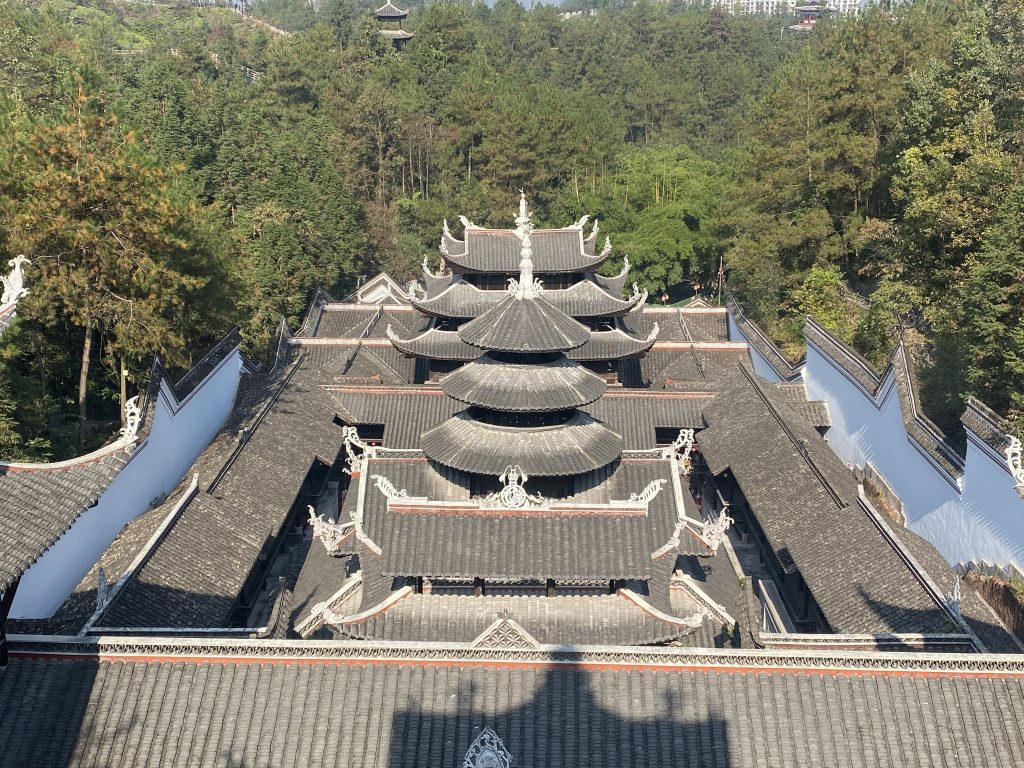Enshi Inbound Mission – A Culture Tour to Wood
On November 12-14, Canada Wood China (CW China) organized an inbound mission to the city of Enshi in Hubei province. This program was organized with support from the Culture and Tourism Bureau of Xuan’en County in Enshi, the Hubei Pengjiazhai Tourism Development Company, Professor Li Baofeng Architecture Studio, the Wuhan Linlang Wooden Architecture Company and Wuhan Manmu Technology Company. Over 40 attendees from architectural design institutes, tourist development investment companies, local provincial media and construction industry representatives participated in this event.
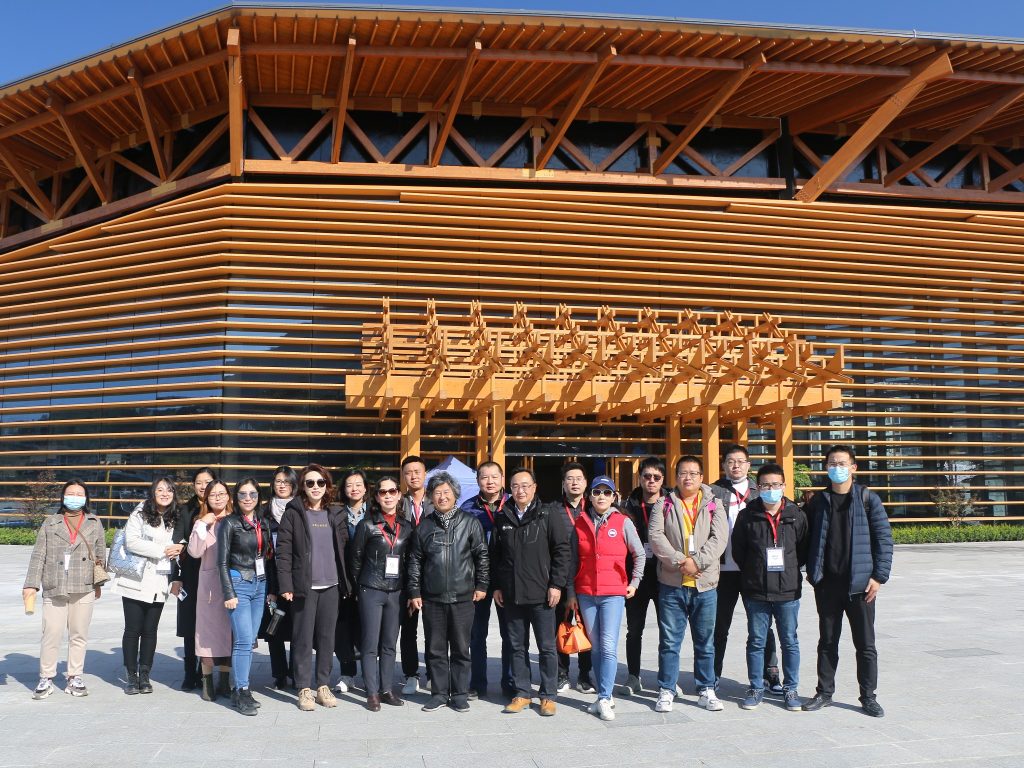
Xuan’en Pengjiazhai Scenic Spot officially opened on August 7, 2021. The facility hosts a national level cultural relics protection department called the Pengjiazhai Ancient Stilted Building Cluster, which has built a revitalized and dynamic Tujia museum.
The Pengjiazhai project was designed by the team of Professor Li Baofeng of Huazhong University of Science and Technology. The architectural design work and research case studies of Pengjiazhai have been invited to participate in the 16th and 17th Venice International Architecture Biennale, which has attracted great attention from international and domestic academic circles. Therefore, Pengjiazhai scenic spot has become known as “the center of Tujia culture and the holy land of architectural art.”

▲ The interior of the Pengjiazhai Tourist Center. 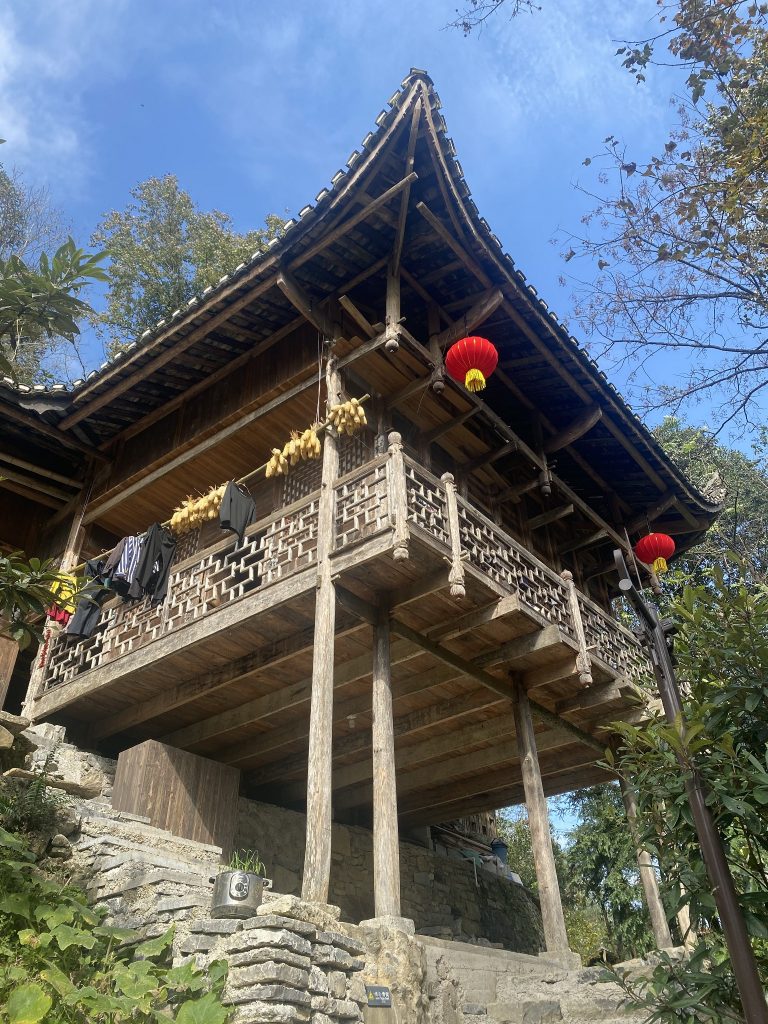
Well-preserved ancient stilted building 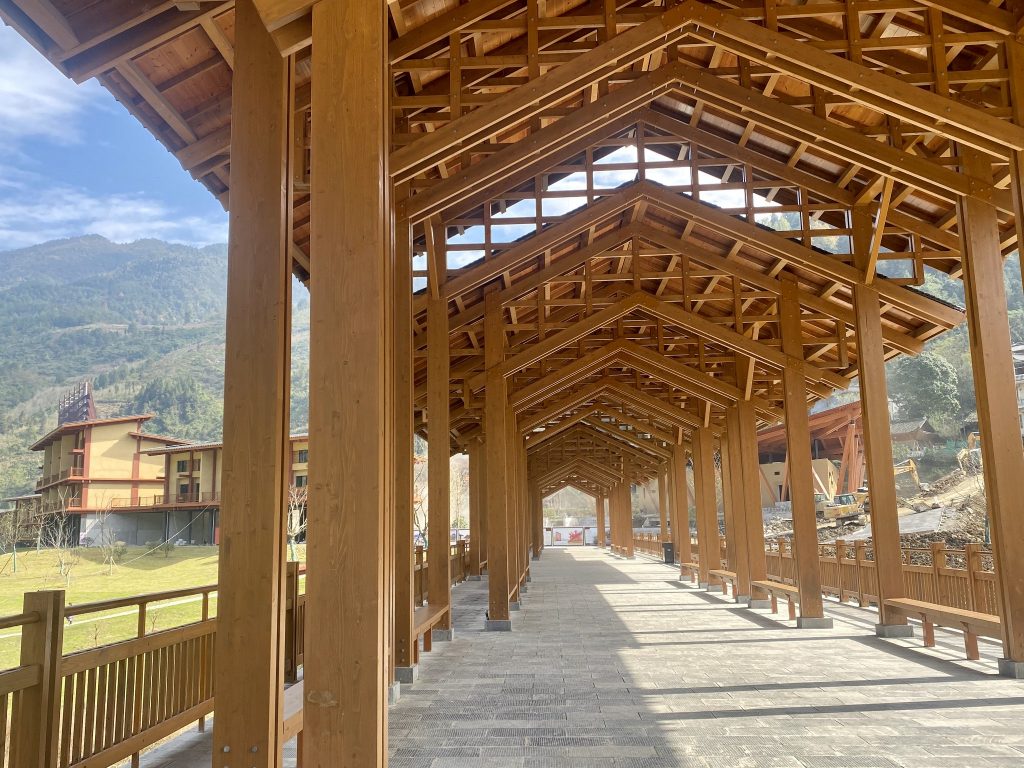
Moke Bridge 
Daxian Bridge 
▲ The interior of the Pengjiazhai Tourist Center.
The delegation visited the Tourist Center, Xianchi Tourist Transfer Center, Shuashua Street, Moke Bridge, Dixian Bridge, Moxiao Tower and Ancient Stilted Building Cluster. Those attractions, which integrate Tujia cultural and modern wood structures, demonstrate the unique architectural charm and strong ethnic customs of the Pengjiazhai Scenic Spot to the guests.
Following a scenic tour of the project that introduced the rich cultural history of the Tujia minority in Xuan’en, a seminar was held at the Moxiao Tower which was made of Douglas Fir and Western Yellow Cedar. With opening remarks delivered by Shao Aihua, a member of the Standing Committee of Xuan’en County Party Committee and the Executive Deputy County Mayor, and Jim Wang, Senior Director of Business Development of Canada Wood China. Three experts were invited to deliver the speeches from the perspective of design, construction, and Canadian wood culture. Panellists included Li Baofeng, professor of Huazhong University of Science and Technology and chief designer of Pengjiazhai Scenic Spot; Huang Jing, Design Director of Wuhan Linlang Wooden Architecture Company, and Travis Joern, Director of Corporate Communications, CW China.
Professor Li Baofeng, the designer of Pengjiazhai, delivered a presentation on “Regenarization – The Planning & Design of China Tujia Pan Museum in Enshi.” His team borrowed from the traditional wisdom of ancient Tujia stilted buildings and the dry fence wood construction techniques, adding modern wood construction techniques to show the spirit of the times. Considering that China’s construction sector consumes approximately 30% – 50% of China’s total energy, Professor Li stressed that the selection of materials is particularly important in the construction industry. Wood is a renewable building material and the use of wood in construction is an effective carbon sequestration solution which can support efforts to combat climate change. Thus, his team used glulam structures and a “triangular truss + string” structural system to reflect the concept of sustainable development. Combined with contemporary technology, the buildings in the Pengjiazhai have both traditional shadows and modern meanings.
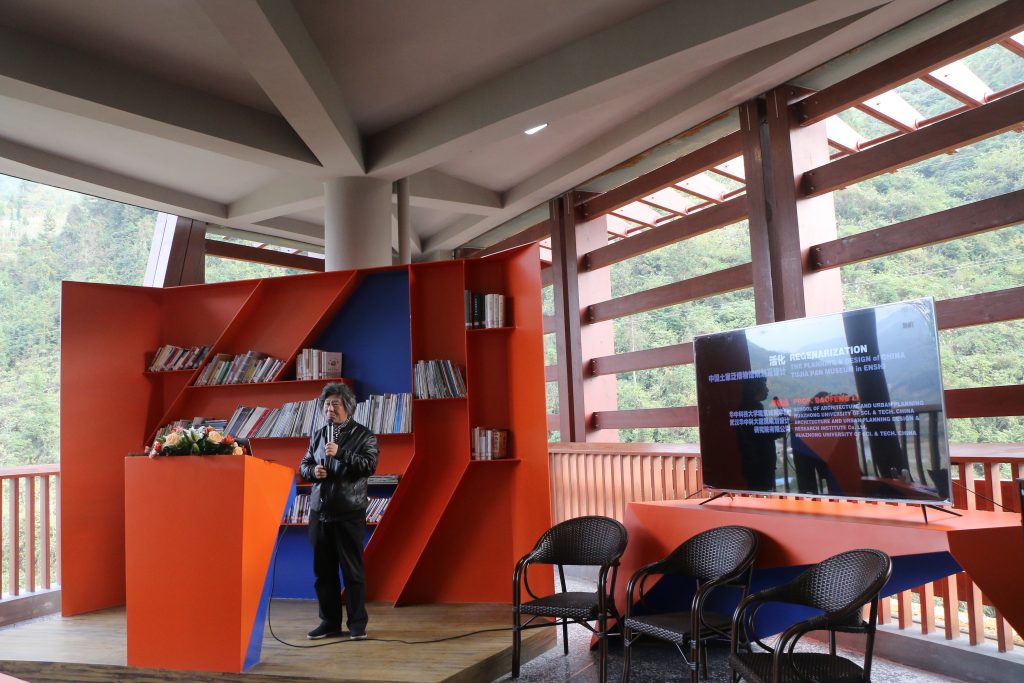
This inbound mission provided a great opportunity for participants to experience the blend of ancient traditional wood designs with modern wood construction techniques, especially on how to utilize the latest digital computing techniques to realize mass timber structures from design to manufacturing and installation. These newly opened wood projects in Enshi bring new inspiration to heritage conservation and rural revitalization in China. In the contemporary era of promoting carbon neutrality and industrialized construction, wood, as a sustainable construction material, continues to prove its benefits and strong momentum in various projects. It also highlights the suitability and adaptability for wood to be used for traditional cultural designs in China.
